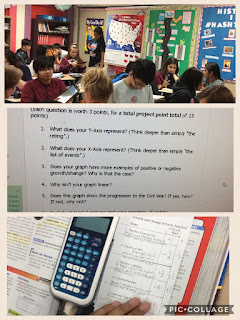NHD Project Updates: Graphic Organizers Rock!
Student Historians are working diligently on their National History Day projects. I have been meeting with student groups according to categories to remind them of the benefits of the Symbaloo Webmix created for them #rightsideofthewebmix and to give them individualized help. We have a few groups creating a dramatic performance and I received some help from our Forensics teacher and compiled her tips as students were writing their scripts, along with a plot diagram for them to use. (I have always utilized graphic organizers with my students, they are incredibly helpful with project development by helping students work effectively and with a focus.) Each group needs to write a Process Paper--a graphic organizer from me should make that process run smoothly, as well. (I will post this document on my Twitter page, the Webmix is only for web links.) Our school-wide presentations are January 23rd (my History classes) and January 24th (our other Histo...







